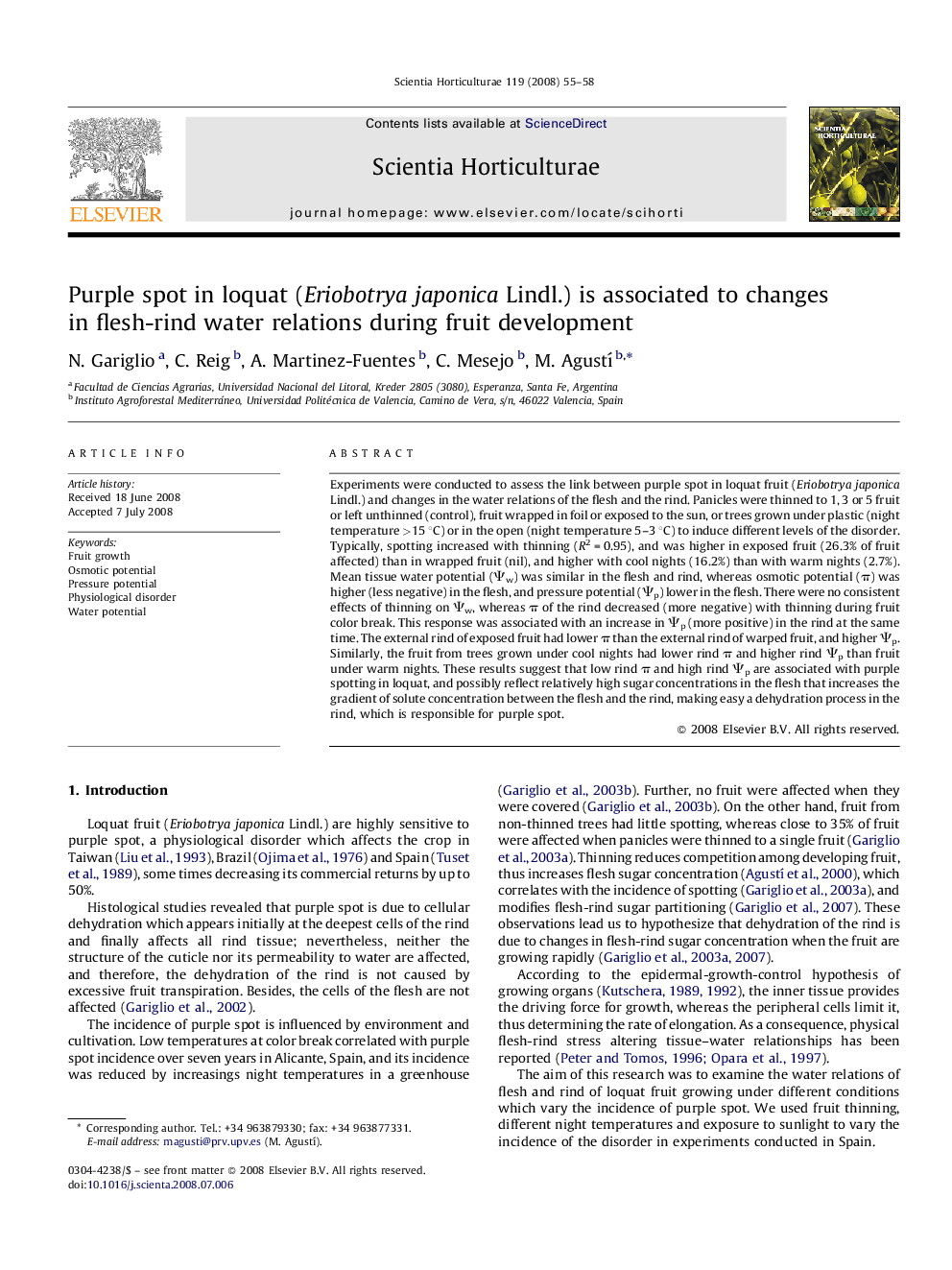| کد مقاله | کد نشریه | سال انتشار | مقاله انگلیسی | نسخه تمام متن |
|---|---|---|---|---|
| 4569397 | 1331336 | 2008 | 4 صفحه PDF | دانلود رایگان |

Experiments were conducted to assess the link between purple spot in loquat fruit (Eriobotrya japonica Lindl.) and changes in the water relations of the flesh and the rind. Panicles were thinned to 1, 3 or 5 fruit or left unthinned (control), fruit wrapped in foil or exposed to the sun, or trees grown under plastic (night temperature >15 °C) or in the open (night temperature 5–3 °C) to induce different levels of the disorder. Typically, spotting increased with thinning (R2 = 0.95), and was higher in exposed fruit (26.3% of fruit affected) than in wrapped fruit (nil), and higher with cool nights (16.2%) than with warm nights (2.7%). Mean tissue water potential (Ψw) was similar in the flesh and rind, whereas osmotic potential (π) was higher (less negative) in the flesh, and pressure potential (Ψp) lower in the flesh. There were no consistent effects of thinning on Ψw, whereas π of the rind decreased (more negative) with thinning during fruit color break. This response was associated with an increase in Ψp (more positive) in the rind at the same time. The external rind of exposed fruit had lower π than the external rind of warped fruit, and higher Ψp. Similarly, the fruit from trees grown under cool nights had lower rind π and higher rind Ψp than fruit under warm nights. These results suggest that low rind π and high rind Ψp are associated with purple spotting in loquat, and possibly reflect relatively high sugar concentrations in the flesh that increases the gradient of solute concentration between the flesh and the rind, making easy a dehydration process in the rind, which is responsible for purple spot.
Journal: Scientia Horticulturae - Volume 119, Issue 1, 10 December 2008, Pages 55–58